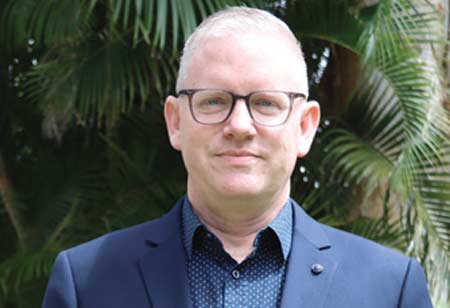Thank you for Subscribing to Healthcare Business Review Weekly Brief

Treating Data As An Asset To Potential Liability
Healthcare Business Review
Scott was born in the UK and was educated in New Zealand, including a few years of medicine after high school. He left NZ after graduating to travel to the UK and stayed for 13 years. He worked as a Senior Business Analyst and Head of Management Information in the Education sector for 12 years. He immigrated to Brisbane in 2008 to be closer to his elderly parents. Scott held the Business Intelligence Manager role at Blue Care for 7 years up until merging with UCQ. He moved on to a series of commercial roles for 4 years to learn about implementing Power BI in various settings with data as diverse as trading data from the ASX to retail data for GHD hair. He returned to the not-for-profit sector and Health Care with Anglicare Southern Queensland in 2021 where he is currently Business Intelligence Manager, a data and analytics lead role. He is currently managing a team of six who are delivering a cloud DW to support KPI reporting through PowerBI to help drive value creation across the business, as well as some initial forays into ML experiments.
1. What are some of the significant challenges and trends impacting the Healthcare Industry lately?
The modernization agenda - ‘many applications used in the healthcare sector are based on legacy code and require modernization.’ This leads to significant pipelines of change heavy projects and with our frontline staff being increasingly over-burdened with work this places heavy challenges to change success. But we are rolling up our sleeves and executing on back of house projects such as moving our on-premise data warehouse to the cloud and decommissioning legacy reporting. Cyber security is a big concern for everyone, not just in our professional lives, and the landscape is constantly evolving. As a result, organizations must remain updated with their cyber-security threat mitigations. Asymmetric data access is also on our radar, with clients and their families increasingly expecting modern data-sharing approaches via mobile apps.
The modernization agenda - ‘many applications used in the healthcare sector are based on legacy code and require modernization.’ This leads to significant pipelines of change heavy projects and with our frontline staff being increasingly over-burdened with work this places heavy challenges to change success.
2. What keeps you up at night regarding some of the significant predicaments in the Healthcare Industry?
The recent Optus breach has given all IT professionals pause for thought. We are shifting our thinking from treating data as an asset to potential liability. The sensitive nature and lengthy legislated and government storage requirements for health-related data means we need extra assurance that we have secured and encrypted the sensitive data in our reporting systems. The Optus breach shows that human error in following processes, policies and procedures is as important in managing cyber security as much as encryption and firewalls play a part in protecting our organizations from cyber-attacks.
3. Can you tell us about the latest project that you have been working on, and what are some of the technological and process elements that you leveraged to make the project successful?
We are building a set of KPI Scorecards and Dashboards, incorporating metrics that confer value for the business and result in a better client experience. We are leveraging data lakehouse architecture with data-driven Azure Synapse pipelines for the data ingest, Databricks notebooks for the modeled layer and Power BI to visualize the dashboards. Underpinning this work is the development of a fit-for-purpose governance framework empowering key stakeholders to take responsibility for ensuring critical data elements is report-ready.
4. What are some of the technological trends which excite you for the future of the Healthcare Industry?
There is excellent potential for assistive technologies, machine learning, and advanced analytics to implement client safety monitoring from streaming device data. For example, we could set up passive monitoring from motion sensor devices to build a regular pattern of activity in a client’s home and then monitor for irregular activity, which could signify something is amiss. Wearable devices could also deliver significant benefits in this space.









